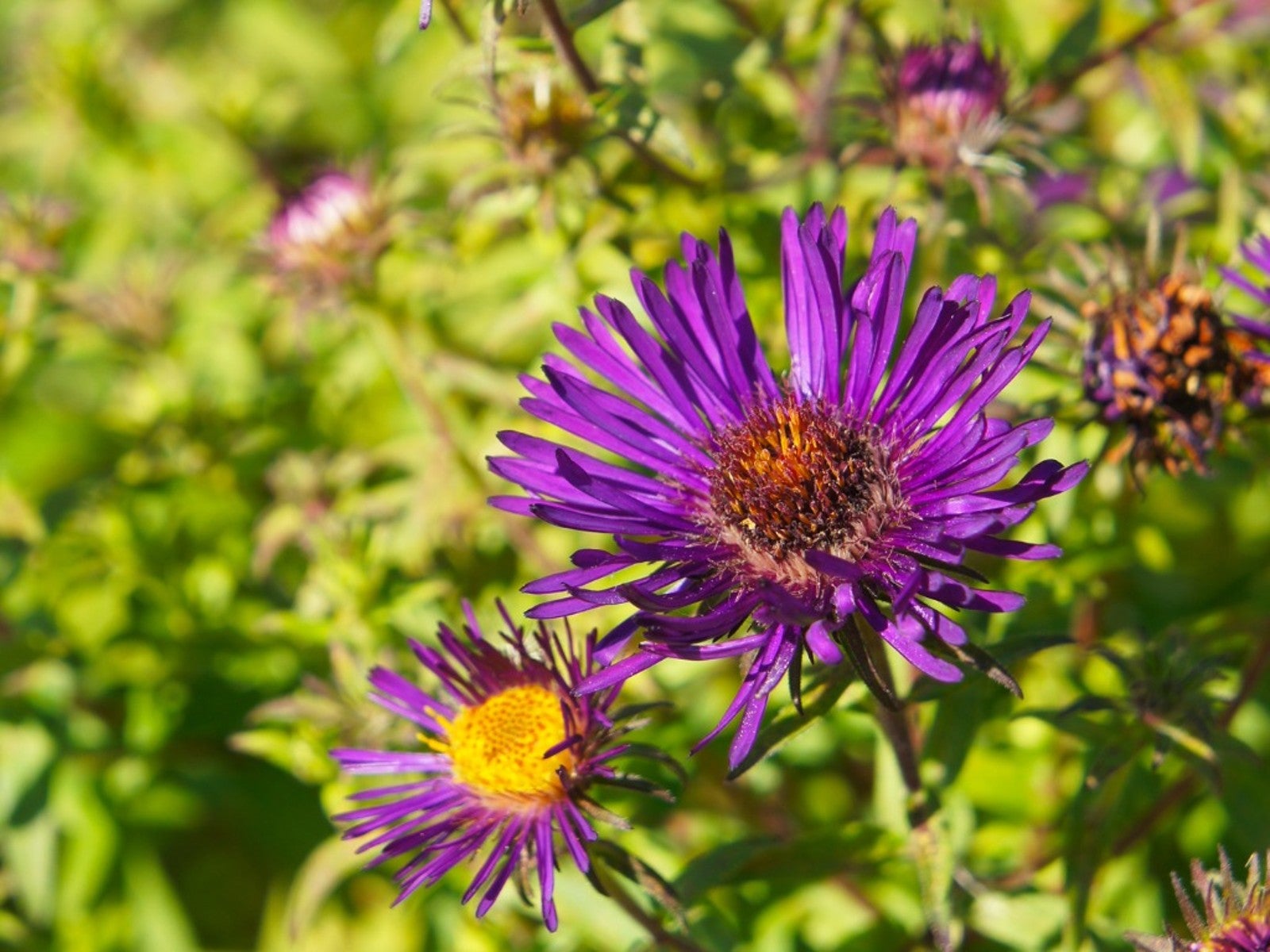Purple Dome Aster Info – How To Grow Purple Dome New England Asters


Purple dome aster is a purple, daisy-like flower that adds cheer to any garden or perennial bed. With some basic purple dome aster information, this is an easy plant to grow. Read on for more.
What are Purple Dome Asters?
Also known as purple dome New England asters, these pretty perennials get their name from the compact mounds they form as they grow. If you’re looking for a clumping, dense perennial, this is a great option.
Use purple dome asters as tight borders, massed in beds, in containers, and in naturalized areas. Purple dome asters grow up to about 18 to 24 inches (46-61 cm.) in height and just a little less wide.
They will attract pollinators, including bees and butterflies, to your garden. Purple dome asters also make excellent cut flowers, although the stems are short.
Growing Purple Dome Aster
Your dome aster will need well-drained soil with good fertility. Add compost before planting. It should get full sunlight and good airflow between clumps, so don’t plant them too closely together. Powdery mildew is one of the few issues this flower may have, and airflow helps prevent it.
To achieve a bushy, well-formed structure, start pinching back stems on your purple dome aster in early to midsummer. This may delay blooming but will ultimately give you more flowers in the summer. Pinching also helps manage the height of the flowers, which may require staking otherwise.
You can leave spent flowers on in naturalized settings to let the asters reseed. If you want a neater border or bed, deadhead the blooms. Divide purple dome asters every two to three years to keep them healthy and thriving.
Sign up for the Gardening Know How newsletter today and receive a free copy of our e-book "How to Grow Delicious Tomatoes".

Mary Ellen Ellis has been gardening for over 20 years. With degrees in Chemistry and Biology, Mary Ellen's specialties are flowers, native plants, and herbs.